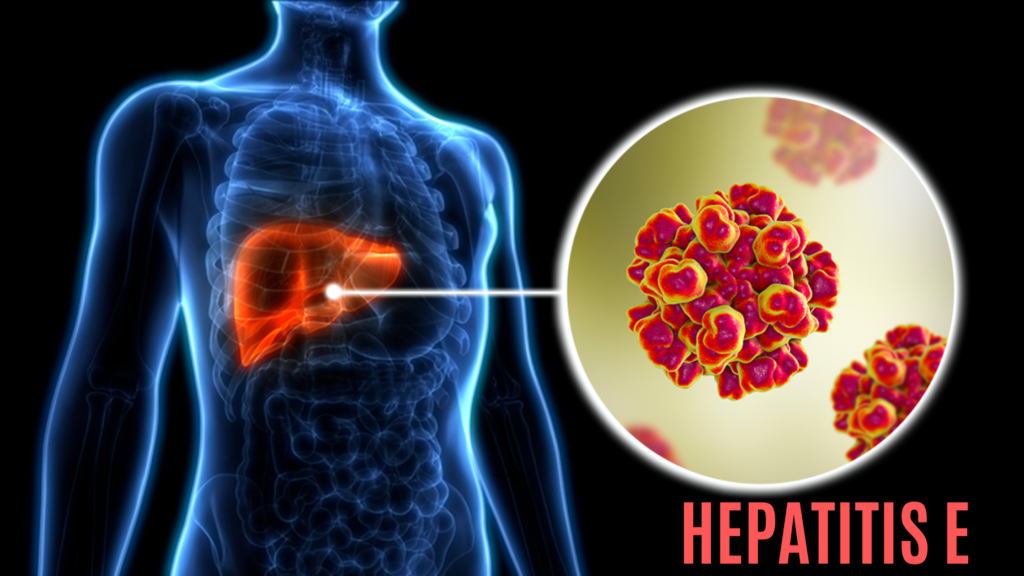🦠 Hepatitis E
Hepatitis E is a liver infection caused by the Hepatitis E virus (HEV). It is typically self-limiting (resolves on its own), but can be severe or fatal in certain populations—especially pregnant women and people with weakened immune systems.
🧬 Cause
- Caused by the Hepatitis E virus (HEV)
- A single-stranded RNA virus from the Hepeviridae family
- At least 4 genotypes infect humans:
- Genotypes 1 & 2: Spread by contaminated water (mainly in developing countries)
- Genotypes 3 & 4: Zoonotic (spread from animals, e.g. pigs); common in industrialized countries
🌍 How It Spreads (Transmission)
- Mainly via the fecal–oral route, especially through:
- Contaminated drinking water
- Undercooked pork, wild game, or shellfish (especially in developed countries)
- Blood transfusion (rare)
- Vertical transmission: Mother to fetus during pregnancy
🕐 Incubation Period
- About 2 to 8 weeks (average 5–6 weeks)
⚠️ Symptoms
Most people recover fully, but symptoms can include:
🔹 Typical Symptoms
- Fatigue
- Nausea, vomiting
- Loss of appetite
- Fever
- Dark urine
- Jaundice (yellow skin and eyes)
- Abdominal pain
- Joint pain
🔴 Severe Cases
- Pregnant women (especially 3rd trimester): Risk of acute liver failure, miscarriage, or death
- People with chronic liver disease or immunocompromised individuals may develop chronic HEV infection (especially Genotype 3)
🧪 Diagnosis
- Blood tests:
- Anti-HEV IgM antibodies (recent infection)
- Anti-HEV IgG antibodies (past infection or immunity)
- HEV RNA PCR test (detects active virus)
- Liver function tests: Elevated ALT, AST
💊 Treatment
- No specific antiviral medication for acute HEV
- Supportive care (hydration, rest, nutrition)
- Ribavirin may be used in chronic HEV (under medical supervision)
💉 Prevention
- Clean drinking water and good sanitation
- Thorough cooking of pork, game meat, and shellfish
- Hand hygiene
- Vaccine: Available in China (HEV 239 / Hecolin), not yet widely available globally
✅ Key Facts
- Hepatitis E is usually mild and resolves on its own
- Can be deadly in pregnant women
- Preventable through sanitation and safe food/water practices
